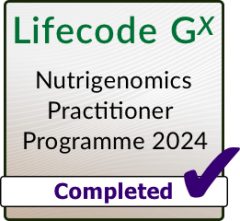Reference Number: 252
Year: 2006
Link: Link to original paper
Nutrition: Anthocyanins | Flavonoids
Inclusions: Grapes
Summary
Flavonols are products of the flavonoid biosynthetic pathway, which also give rise to anthocyanins and condensed tannins in grapes. We investigated their presence in the berry skins of 91 grape varieties (Vitis vinifera L.), in order to produce a classification based on the flavonol profile. The presence of laricitrin 3-O-galactoside and syringetin 3-O-galactoside in red grapes is reported here for the first time. In red grapes, the main flavonol was quercetin (mean = 43.99%), followed by myricetin (36.81%), kaempferol (6.43%), laricitrin (5.65%), isorhamnetin (3.89%), and syringetin (3.22%). In white grapes, the main flavonol was quercetin (mean = 81.35%), followed by kaempferol (16.91%) and isorhamnetin (1.74%). The delphinidin-like flavonols myricetin, laricitrin, and syringetin were missing in all white varieties, indicating that the enzyme flavonoid 3′,5′-hydroxylase is not expressed in white grape varieties. The pattern of expression of flavonols and anthocyanins in red grapes was compared, in order to gain information on the substrate specificity of enzymes involved in flavonoid biosynthesis.
What does this mean for bakers?
Polyphenols and anthocyanins are known to be associated with beneficial bacteria such as Akkermansia. Other studies have also linked consumption of grapes with a lowered risk of heart disease and some types of cancer. Red grapes have a higher content of these compounds than white grapes, so bakers should choose darker skinned grapes for focaccia toppings.

